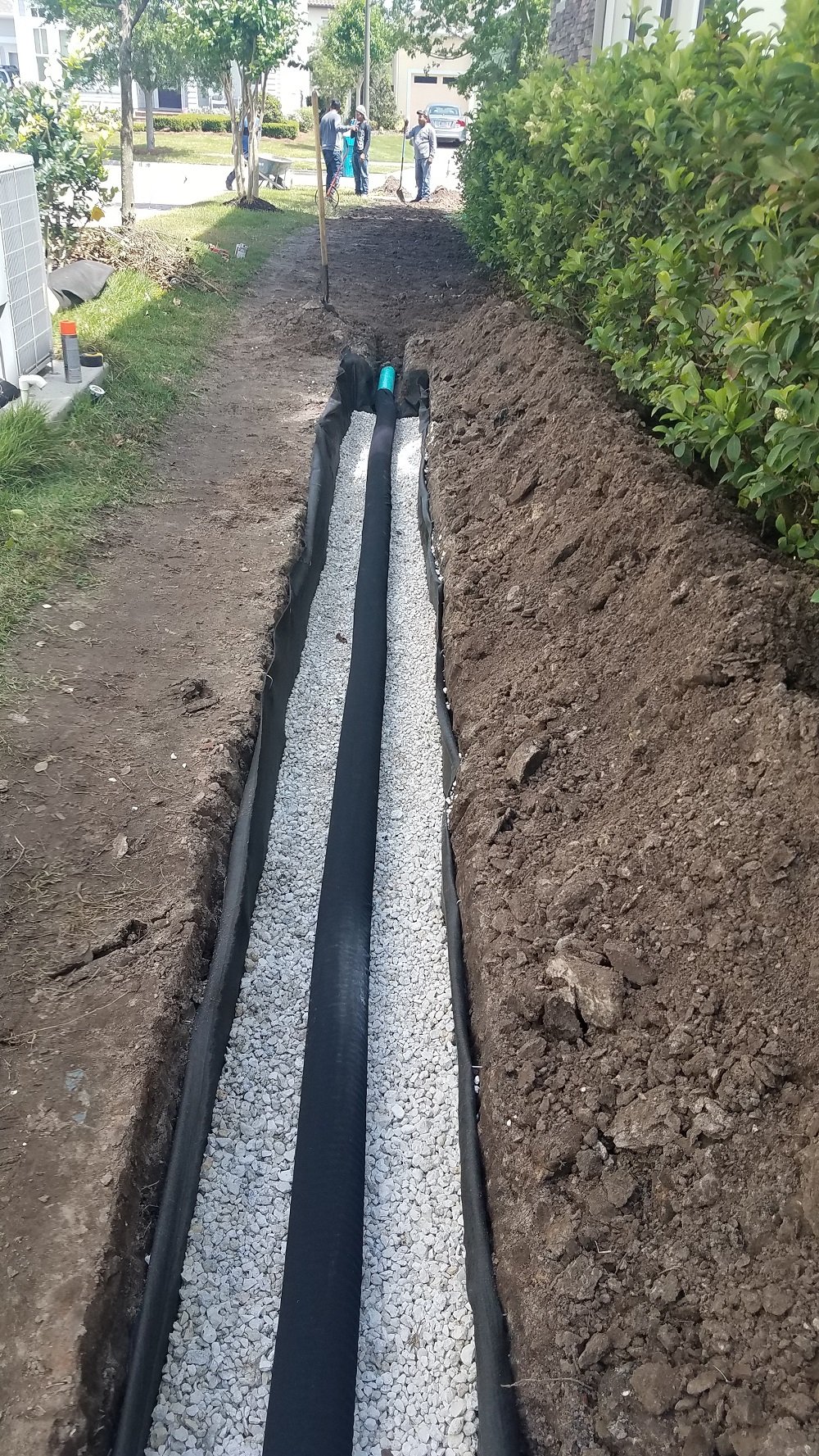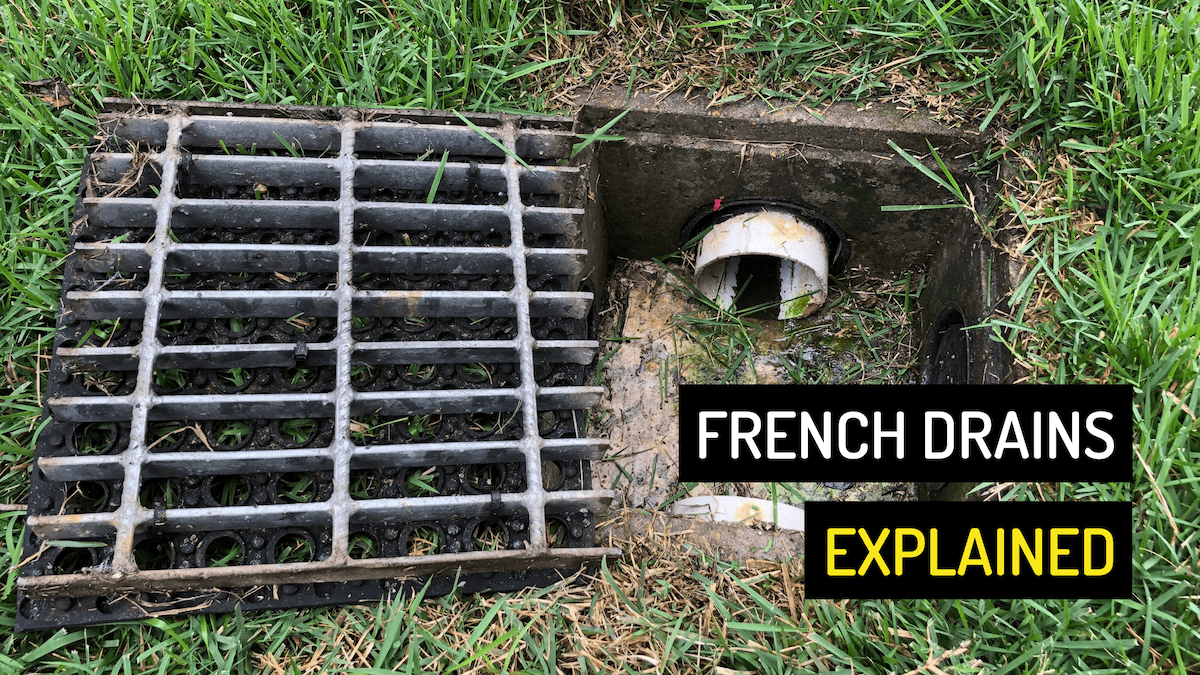Perfect Time of Year to Set Up a Portland French Drain System
The Essential Guide to Preserving Your French Drainpipe for Resilient Efficiency
Preserving your French drain is essential to its performance and your home's security. Routine checks can save you from pricey fixings and water damage. You'll wish to know what signs to look for and just how often to evaluate your system. And also, recognizing the cleaning process can make a substantial distinction. Let's explore the essential actions for guaranteeing your drainpipe works well for many years to come.
Understanding the Feature of a French Drainpipe
A French drain is an important component in managing water around your home. It routes excess water away from your foundation, stopping flooding and damages. When heavy rainfall falls, the drain accumulates water with a perforated pipe hidden in gravel. This system permits water to stream freely, reducing stress on your basement wall surfaces and reducing the risk of leaks.You might question just how it works in practice. As water fills the soil, gravity draws it toward the drainpipe. The perforated pipe catches this water, transporting it to a designated water drainage area or tornado sewer. This process keeps your backyard dry and shields your home's structural integrity.Understanding exactly how a French drainpipe functions is vital to valuing its importance. By efficiently funneling water away, it aids preserve a safe and dry living environment. Keeping your French drainpipe in top condition warranties you avoid costly repair work down the line.
Regular Evaluations: What to Look For
Begin by inspecting for any kind of obstructions that may be blocking water circulation when you're inspecting your French drainpipe. Take note of indications of surface area disintegration around the drainpipe, as this can indicate prospective problems. Normal analyses will certainly help keep your drain system operating effectively.
Clogged Drain Assessment
Exactly how can you inform if your French drainpipe is obstructed? Initially, expect water merging in your lawn, especially after heavy rain. If you observe locations where water gathers as opposed to draining pipes, that's a red flag. You should also check the drainpipe electrical outlet; if water isn't draining as it should, there's likely an obstruction. Listen for unusual gurgling sounds, which can indicate trapped air. In addition, inspect the drain's surface area for any vegetation development, as origins can penetrate and block the system. Lastly, if you smell moldy odors, it can indicate stationary water triggered by a blockage. On a regular basis reviewing these indicators can aid you maintain your French drainpipe effectively and prevent pricey repair work.
Surface Erosion Inspect

Cleansing Your French Drain: Step-by-Step Guide
Cleansing your French drain is necessary for keeping it operating properly. You'll require some particular devices and a clear process to guarantee everything runs efficiently. Allow's go through the steps and ideas for maintaining your drain effectively.
Tools You'll Need
To deal with the job of cleansing your French drain effectively, you'll wish to gather a few necessary devices. First, get a strong pair of handwear covers to secure your hands from particles and sharp things. A little shovel or trowel will assist you eliminate dust or obstructions around the drainpipe. For cleaning out the inside, a plumbing professional's serpent or a high-pressure water nozzle can be unbelievably valuable. You'll additionally require a pail for accumulating any particles you take out. Having a yard hose on hand will certainly make it much easier to wash out the drainpipe and ensure it's flowing efficiently. With these devices all set, you'll be established for a complete cleansing session!
Cleaning Up Process Actions
Start by assessing the area around your French drainpipe for any kind of visible debris or clogs. Get rid of fallen leaves, branches, or dirt that may block water flow. Next, examine the inlet and outlet areas; clear any type of blockages to guarantee correct water drainage. Use a yard hose pipe to flush the drainpipe, directing water right into the inlet. This aids dislodge any kind of collected sludge or sediment. If you see relentless obstructions, take into consideration making use of a plumbing professional's snake to damage them up. After cleansing, inspect the crushed rock around the drain; restore it if it's washed away. Verify the drainpipe covers are intact and safely in area to protect against debris from getting in. Regular cleansing keeps your French drainpipe working effectively.
Maintenance Regularity Tips
While regular upkeep is vital for your French drain's longevity, recognizing how typically to keep it can make all the difference. Preferably, you ought to evaluate your French drainpipe a minimum of two times a year, ideally in springtime and fall. After hefty rains or snowmelt, look for blockages or debris. If you observe any standing water, it's time to clean your drain.In locations with heavy vegetation, even more frequent maintenance-- about every 3 months-- might be necessary. Additionally, think about cleaning your French drainpipe after major storms or if you observe water pooling in your lawn. By remaining proactive, you'll ensure your French drain features properly and shields your building from water damage. Normal checks will certainly conserve you time and cash in the long run.
Identifying Common Issues and Their Solutions
It's crucial to determine typical issues with your French drain and implement effective remedies when you see water merging in your backyard or damp areas in your basement. One frequent problem is clogging, often caused by debris like fallen leaves or debris. To fix this, you can use a pipes snake or a high-pressure water jet to clear blockages.Another concern could be incorrect slope. Water won't flow away from your home if your drainpipe isn't sloped properly. You can change the slope by digging and repositioning the drainpipe pipe.Lastly, check for damages or fractures in the drain itself. Changing the damaged sections is vital for peak efficiency if you discover any. By addressing these concerns immediately, you'll assist assure that your French drain remains to work properly, securing your building from water damage and maintaining a completely dry, safe atmosphere.
Seasonal Upkeep Tips for Your French Drain
Resolving usual problems with your French drainpipe is simply the initial action in assuring its long-term performance. Seasonal maintenance is crucial for peak performance. In the springtime, clear away leaves and particles that might have built up throughout winter season. Look for any obstructions in the electrical outlet or catch container, as water requires a clear path to stream freely.During summertime, evaluate your drain for any kind of my latest blog post signs of clearing up or changing soil. Make sure it's still degree and operating correctly. As autumn strategies, clear out any kind of dropped leaves to avoid blockages before winter season arrives.In winter, watch for freezing temperatures. If you stay in a cool environment, make certain your drain isn't at threat of cold. Protecting exposed pipes can assist. Routine checks and timely maintenance can stop expensive repair services and keep your French drain working effectively year-round. Remain aggressive and delight in comfort understanding your drain system is in good form!
When to Call in a Specialist
When to call in an expert can conserve you time and protect against more damage to your French drain, understanding. It's a clear sign that your drainpipe might be clogged or damaged if you see persistent standing water in your lawn. Don't disregard unusual smells, as they can indicate sewer back-up or decay, which calls for instant attention.If you discover that your drainpipe isn't operating appropriately after attempts to clean or preserve it, it's time to reach out for specialist help. Additionally, if you're unsure concerning the underlying problems or do not have the needed tools, hiring a professional can give peace of mind.Finally, if your French drainpipe is old or has actually experienced significant damage, professional assessment can determine whether fixings or total substitute is needed. Trust fund the specialists to ensure your drainage system functions successfully for many years to find.
Tips for Preventing Future Drainage Problems
To maintain your French drainpipe functioning successfully, on a regular basis examining and keeping it can make all the difference. Begin by getting rid of debris, leaves, and dust from the surface area and drain openings. This stops clogs that can result in water back-up. Inspect the crushed rock around the drain; if it's compressed or eroded, take into consideration adding fresh crushed rock to preserve optimal flow.Next, draw away water far from your drain by making look at here now certain rain gutters and downspouts are clear and directing water at the very least 3 feet far from your foundation. On a regular basis examine for any signs of damage or sagging. If you observe problems, address them immediately.Finally, think about installing a catch or a filter container to trap larger debris before it enters the drain. By remaining proactive with these ideas, you'll minimize the danger of future water drainage problems and maintain your French drain in top form.
Regularly Asked Inquiries
For how long Does a French Drain Normally Last?
A French drainpipe commonly lasts around 30 to 40 years, relying on the products made use of and upkeep (Portland French Drain). If you maintain up with regular checks, you can prolong its life expectancy also additionally
Can I Set Up a French Drain Myself?
Yes, you can mount a French drain on your own if you have actually got the right tools and understanding. Just make sure to plan very carefully, comply with local policies, and guarantee correct water drainage to avoid future problems.
What Materials Are Used in a French Drainpipe?
You'll require perforated pipe, gravel, landscape textile, and a solid drainage pipe for your French drainpipe. These products help reroute water effectively, stopping flooding and keeping your property safe and completely dry from water damages.

Is an Authorization Required to Mount a French Drainpipe?
You'll likely require an authorization to install a French drain, relying on neighborhood regulations. Check with your municipality to guarantee you abide by any kind of required guidelines and avoid possible issues during installment.
What Are the Prices Associated With French Drain Maintenance?
Maintaining a French drain typically sets you back in between $100 and $500 every year. You'll require to take into consideration expenses for cleaning, fixings, and assessments. Routine maintenance helps protect against bigger costs and guarantees your system works correctly for years - Portland French Drain. When you're inspecting your French drainpipe, begin by checking for any kind of obstructions that may be blocking water flow. By remaining positive, you'll guarantee your French drainpipe functions efficiently and protects your home from water damage. When you observe water pooling in your backyard or damp spots in your cellar, it's important to visit site recognize typical issues with your French drainpipe and execute reliable remedies. You can change the slope by excavating and repositioning the drainpipe pipe.Lastly, check for damages or fractures in the drainpipe itself. Inspect the crushed rock around the drainpipe; if it's compacted or deteriorated, think about including fresh gravel to keep ideal flow.Next, draw away water away from your drain by making certain downspouts and seamless gutters are clear and directing water at the very least 3 feet away from your foundation